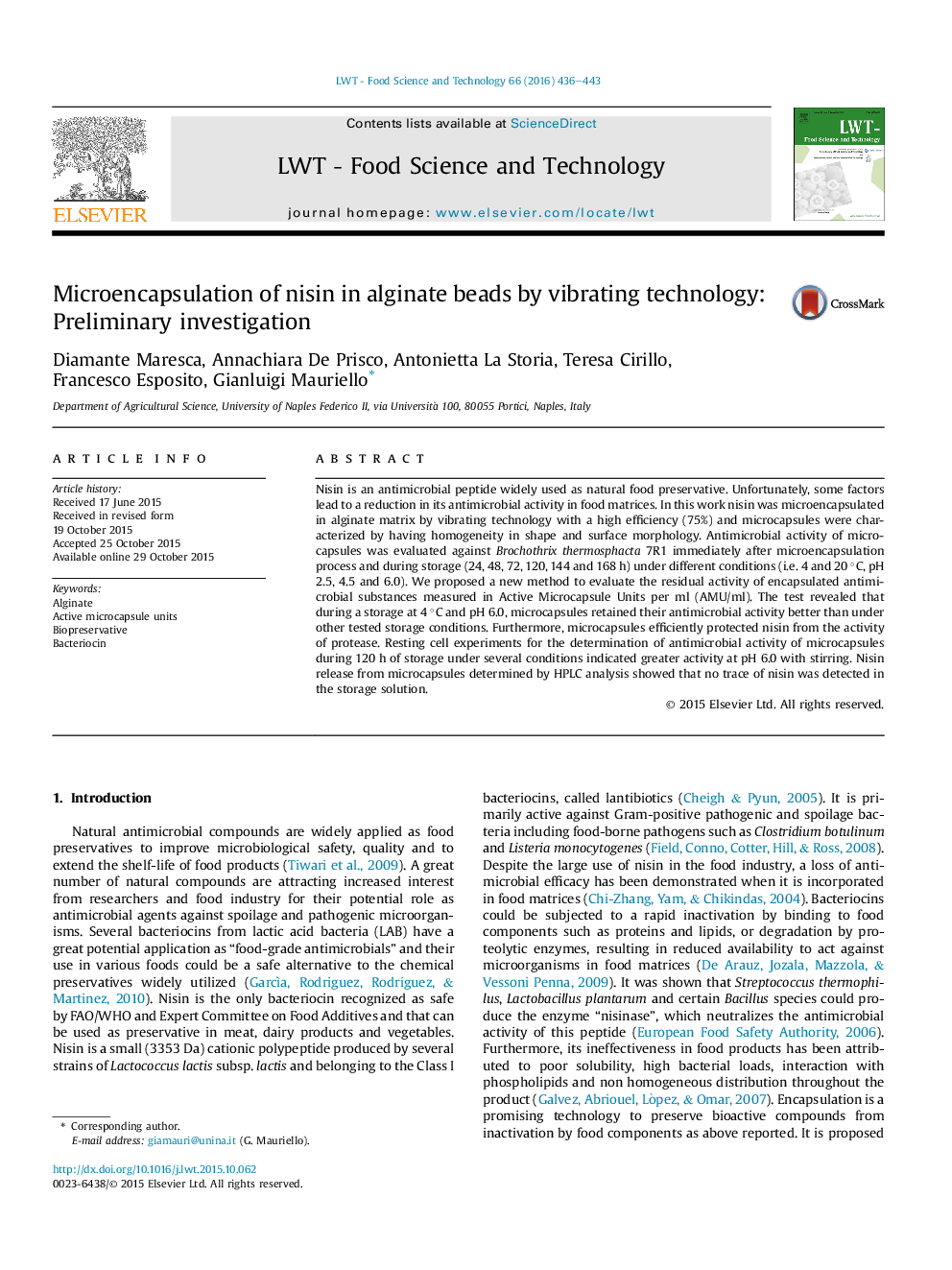| Article ID | Journal | Published Year | Pages | File Type |
|---|---|---|---|---|
| 6401007 | LWT - Food Science and Technology | 2016 | 8 Pages |
â¢Vibrating technology was shown to be an efficient technique (75%) for encapsulating nisin.â¢Nisin alginate-microcapsules were homogeneous in shape and surface morphology.â¢Nisin microcapsules in seeded agar medium appeared like phage plaques.â¢Microcapsules efficiently protected nisin from protease activity.â¢Microcapsules efficiently retarded nisin release.
Nisin is an antimicrobial peptide widely used as natural food preservative. Unfortunately, some factors lead to a reduction in its antimicrobial activity in food matrices. In this work nisin was microencapsulated in alginate matrix by vibrating technology with a high efficiency (75%) and microcapsules were characterized by having homogeneity in shape and surface morphology. Antimicrobial activity of microcapsules was evaluated against Brochothrix thermosphacta 7R1 immediately after microencapsulation process and during storage (24, 48, 72, 120, 144 and 168 h) under different conditions (i.e. 4 and 20 °C, pH 2.5, 4.5 and 6.0). We proposed a new method to evaluate the residual activity of encapsulated antimicrobial substances measured in Active Microcapsule Units per ml (AMU/ml). The test revealed that during a storage at 4 °C and pH 6.0, microcapsules retained their antimicrobial activity better than under other tested storage conditions. Furthermore, microcapsules efficiently protected nisin from the activity of protease. Resting cell experiments for the determination of antimicrobial activity of microcapsules during 120 h of storage under several conditions indicated greater activity at pH 6.0 with stirring. Nisin release from microcapsules determined by HPLC analysis showed that no trace of nisin was detected in the storage solution.
